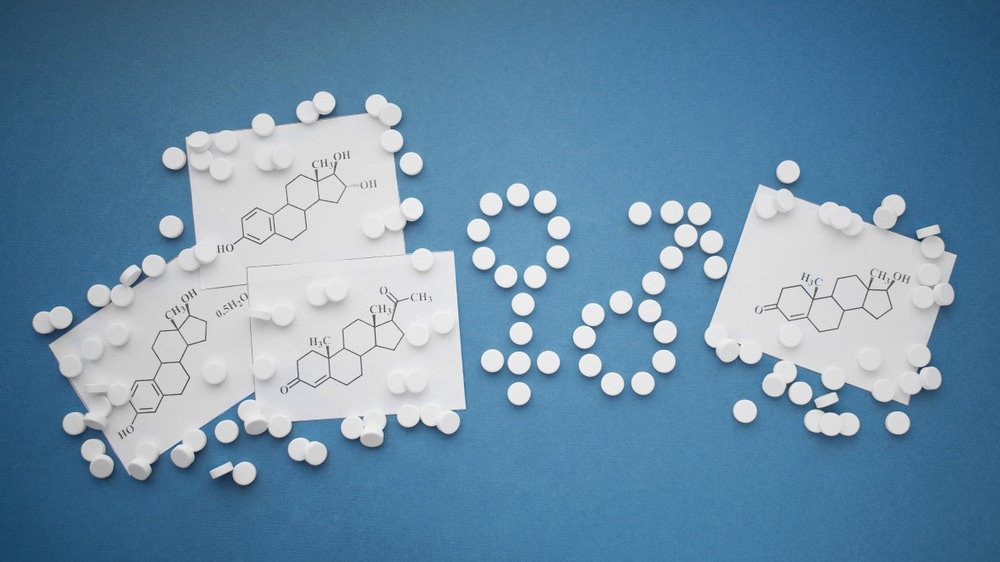Estrogenic steroids such as estrone (E1), estradiol (E2), estriol (E3), and ethynyl estradiol (EE2) are among the most potent endocrine disrupting compounds (EDCs) causing severe health effects to humans and other animals when present in water bodies, as they are the main disposal pathway for the human waste born estrogenic steroids.

Study: Carbon Nanodots with Solvatochromic Photoluminescence for the Electrochemical Determination of Estrogenic Steroids. Image Credit: linda_kar/Shutterstock.com
In an article published in the journal ACS Applied Nano Materials, a special type of carbon nanodots (R-CNDs) were utilized for electrochemical detection of estrogenic steroids present in natural and tap water as well as effluents from Swedish wastewater treatment plants (WWTPs). The R-CNDs obtained from 2-aminophenol via solvothermal synthesis were used to modify chitosan-based selective membranes, which were later applied to electrodes.
R-CNDs were characterized using atomic force microscopy (AFM) and transmission electron microscopy (TEM). The results revealed that R-CNDs had a spherical morphology with a lateral size in the range of 3 to 8 nanometers and a height of 1 to 8 nanometers. Unlike other carbon nanodots (CNDs), R-CNDs were soluble in organic solvents.
The small R-CNDs of 3 nanometers size were more hydrophilic in nature than their large counterparts and were separated from bulk suspension (in heptane) using a water/ethanol mixture. While the R-CNDs of large size exhibited green photoluminescence in apolar solvents, their smaller counterparts exhibited orange photoluminescence in polar solvents. This photoluminescence phenomenon was due to the solvatochromic effect.
CNDs for Electrochemical Detection of Estrogenic Steroids
EDCs include a wide range of chemicals, and estrogenic steroids are a group of biologically active EDCs. The natural estrogenic steroids, E1, E2, E3, and the synthetic one, EE2, are commonly found in wastewater. E1, E2, and E3 estrogenic steroids are predominantly found in female hormones, while EE2 is a synthetic steroid used as a contraceptive.
Humans and animals excrete estrogenic steroids in different amounts that end up in the environment through sewage discharge and animal waste disposal. The presence of estrogenic steroids in the aquatic environment is due to their incomplete removal during the wastewater treatment processes.
Estrogenic steroids in water bodies may cause risks, particularly to the aquatic population. Example consequences include synthesis and secretion of a female-specific protein (vitellogenin) in male fish, development of intersex characteristics, and failure to develop secondary characteristics which will induce changes in reproduction.
Nanomaterials are potent electrode modifiers used in electrochemical analysis to enhance selectivity and amplify the signals. CNDs have a large surface area and outstanding electroconductivity. However, the high hydrophilicity of CNDs leads to their dissolution in aqueous media, causing particle desorption from the electrode surface, thus reducing the sensitivity of the electrodes.
Thus, to circumvent this problem, the water solubility of CNDs was reduced by preparing R-CNDs from 2-aminophenol with poor water dispersibility and high colloidal stability in apolar solvents. Moreover, the nitrogen-doped R-CNDs have improved electron-donating property that modifies the selectivity of electrodes.
Electrochemical Determination of Estrogenic Steroids using R-CNDs
In the present work, the R-CNDs were synthesized from 2-aminophenol via the solvothermal carbonization method and embedded onto a pencil-graphite electrode to use them as a selective membrane in the electrochemical determination of estrogenic steroids.
The Fourier transform infrared (FT-IR) spectra of the prepared R-CNDs showed a broad peak at 3200-centimeter inverse, indicating the presence of hydroxyl (O-H) groups. The peaks observed between 2700 and 3020-centimeter inverse attributed to the aromatic ring’s C–H stretching. Moreover, the peaks at 1570 and 1640-centimeter inverse corresponded to N–H bending and C=O vibrations. Furthermore, the solvatochromic photoluminescence demonstrated by R-CNDs in organic solvents relied on their particle size.
The linear amino polysaccharide chitosan was used to modify the pencil-graphite electrode due to its adhesive nature and weak cationic polyelectrolyte properties. Thus, the carboxyl functional groups on the surface of R-CNDs interact with the cationic chitosan to form a hybrid chitosan /CNDs film. This hybrid film was applied for the voltammetric determination of four abandoned estrogenic steroids: E1, E2, E3, and EE2.
The prepared sensor demonstrated a selective response towards estrogenic steroids with a detection limit of 17 nanomoles per liter and a determination range of 0.05 to 4.6 micromoles per liter in the presence of interfering bioactive compounds, including uric acid, paracetamol, sulfamethoxazole, progesterone, ibuprofen, trimethoprim, and caffeine.
These sensors also showed reproducibility and repeatability values of 4.3% and 1.8–3.4%, respectively, in determining estrogenic steroids. The recovery range obtained was 93 to 100% for lake and tap water samples. Thus, the fabricated sensors were cost-effective, stable, highly selective, and sensitive toward estrogenic steroids.
Conclusion
Overall, the formation of R-CNDs from 2-aminophenol via solvothermal synthesis was confirmed by employing FTIR spectroscopy, AFM, and TEM studies. R-CNDs prepared in this work were photoluminescent and spherically shaped with diameters between 3 and 8 nanometers, embedded into chitosan-modified pencil-graphite electrodes to determine the presence of estrogenic steroids in water samples.
The R-CNDs were more soluble in organic solvents than in water. The nanoparticles of 3 nanometers size were more hydrophilic than their larger counterparts with a size range between 6 and 8 nanometers and could be separated from bulk suspension using ethanol/water mixture.
Reference
Mikhraliieva, A., Tkachenko, O., Freire, R., Zaitsev, V., Xing, Y., Panteleimonov, A., Strømme, M et al. (2022). Carbon Nanodots with Solvatochromic Photoluminescence for the Electrochemical Determination of Estrogenic Steroids. ACS Applied Nano Materials. https://pubs.acs.org/doi/10.1021/acsanm.2c02219
Disclaimer: The views expressed here are those of the author expressed in their private capacity and do not necessarily represent the views of AZoM.com Limited T/A AZoNetwork the owner and operator of this website. This disclaimer forms part of the Terms and conditions of use of this website.